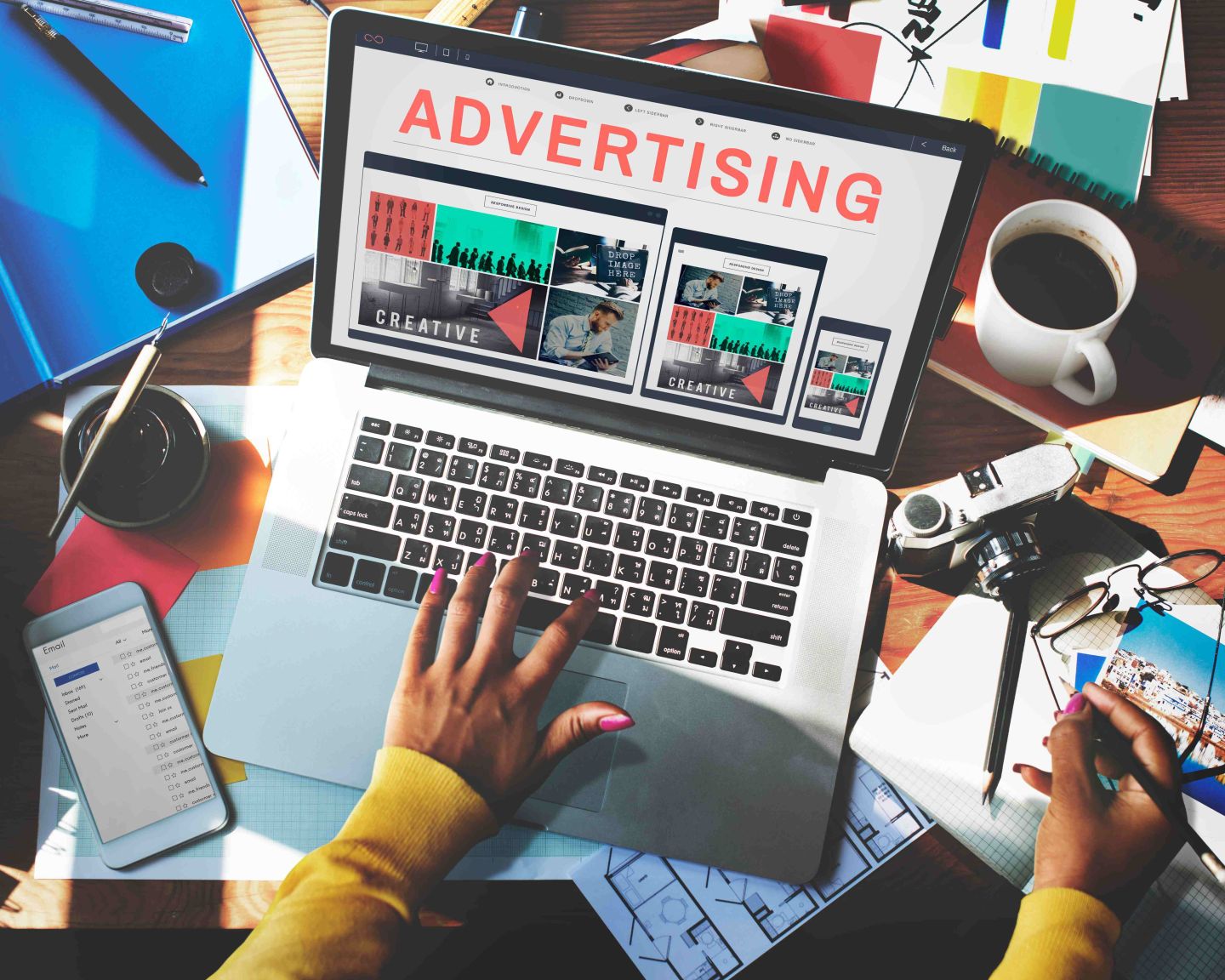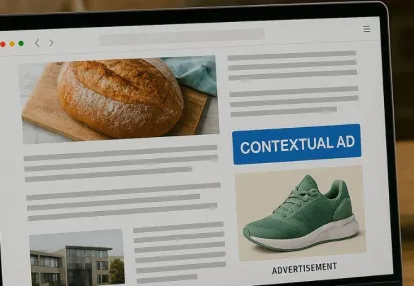
Our spy tools monitor millions of native ads from over 60+ countries and thousands of publishers.
Get StartedNative ads have emerged as a game-changer in digital marketing, offering a seamless integration of advertising with content. Unlike traditional ads, native ads blend into the platform they appear on, providing a non-disruptive user experience. These can manifest as in-feed ads, paid search ads, content-recommendation widgets, promoted listings, and more.
Despite their potential for increasing engagement and achieving high click-through rates, many native ads fail to attract viewers. This failure often stems from common mistakes in native advertising that marketers might overlook.
Key takeaway: The benefits of native advertising are clear. However, without proper execution, even the most promising native ad campaigns can fall short of generating the desired results. Understanding the pitfalls is crucial for crafting effective strategies.
You can gain valuable insights into improving your native ad performance by exploring 10 charts that are changing the way we measure content. These charts highlight how measuring the effectiveness of content goes beyond just click-through rates and delve into key trends and metrics that shape successful native ad campaigns.
Additionally, you can seek inspiration from successful campaigns through tools like Anstrex. Anstrex allows you to spy on profitable native ads and gain a competitive edge by understanding what works in the market. With this knowledge, you can build winning native advertising campaigns while optimizing your advertising spend effectively.
Native ads can be powerful tools, but their effectiveness hinges on several critical factors. When these elements are neglected, even the most promising campaigns can fall flat.
A primary reason native ads fail is their lack of relevance and authenticity. If your ad doesn't resonate with the target audience or align with their interests, it's unlikely to capture attention or drive engagement.
How Misalignment Affects Engagement:
Examples Illustrating Lack of Relevance:
Imagine you're promoting high-end fashion products but targeting an audience interested in budget-friendly shopping tips. The disconnect between content and audience interests will likely result in low click rates and poor engagement.
Case Study Insight:
Another common pitfall is poorly designed content that fails to engage users visually or contextually.
Key Elements of Successful Native Ads:
Effective Campaign Example:
A travel agency creates a series of beautifully shot videos showcasing exotic destinations. By integrating these videos into a travel blog as recommendations rather than traditional ads, they achieved higher engagement rates and longer reading times.
Case Studies Highlighting Success:
Examining successful campaigns can offer valuable lessons:
Ensuring your native ads are both relevant and authentically presented can significantly improve their effectiveness. By addressing these common issues—lack of relevance and poor design—you set the stage for more engaging and successful campaigns.
For more inspiration on how to create effective native ads, you can explore these 15 Native Advertising Examples to Brainstorm More Ideas that demonstrate how native advertising blends nicely within the main article content.
When native ads fail to attract viewers, poorly designed content and format are often culprits. Effective native ads require compelling visuals, seamless integration, and non-disruptive formats.
Compelling Visuals
Seamless Integration
Non-disruptive Formats
Case studies demonstrate how well-designed native ads drive engagement:
Spotify's annual "Wrapped" campaign is a prime example of effective native advertising. It integrates seamlessly into users' experiences by summarizing their listening habits over the past year, presented in a visually compelling and shareable format. This approach not only captures attention but also encourages social sharing, amplifying its reach.
Airbnb collaborated with local influencers to create city guides that blended organically with travel blogs and lifestyle websites. The guides featured high-quality images and insider tips, making them valuable content rather than overt advertisements. As a result, they achieved high engagement rates without disrupting the reader's experience.
Native ads demand meticulous content production to ensure they resonate with audiences. By focusing on compelling visuals, seamless integration, and non-disruptive formats, you can enhance your native ad campaigns' effectiveness and capture audience attention more effectively.
Native ads need to do more than just blend in with the surrounding content; they must captivate and hold the reader's interest. This is where storytelling, emotional appeal, and interactive elements come into play.
Storytelling transforms a simple advertisement into an engaging narrative that resonates with your audience. By crafting a compelling story around your product or service, you create an emotional connection with your viewers. Stories that evoke emotions such as happiness, nostalgia, or empathy are more likely to be remembered.
Example: A travel company might share a story about a family's unforgettable vacation experience. This not only highlights their services but also taps into the reader's desire for similar joyful experiences.
Emotional appeal in native ads can significantly enhance engagement. Ads that elicit strong emotions are more likely to be shared and remembered. Emotionally charged content creates a deeper connection with the audience, making them more likely to engage with the ad.
Example: Charity organizations often use emotional appeal by sharing stories of individuals who have benefited from donations. This approach encourages viewers to contribute by tapping into their sense of empathy and compassion.
Interactive elements such as quizzes, polls, or infographics can boost engagement by making the ad experience more dynamic. Interactive content invites users to participate actively rather than passively consuming information, thereby increasing attention minutes spent on the ad.
Example: A beauty brand could create an interactive quiz that helps users determine their skin type and recommends suitable products based on their answers. This not only engages users but also provides personalized value.
By employing these strategies, you can create native ads that not only fit seamlessly within their environment but also capture and maintain viewer attention effectively.
Social media platforms have become essential tools for promoting native ads. The power of social sharing is that it can boost your message naturally. When users share your content, it reaches more people and gains credibility through peer endorsements. This organic reach can greatly improve the effectiveness of your native ads.
Working with influencers can be a game-changer in maximizing the reach of your native ads. Influencers have built trust and connection with their followers, making their endorsements especially powerful. Partnering with influencers who share your brand values can ensure that your native ads are seen as genuine and interesting.
Using targeted promotion strategies on social media is another effective way to improve the performance of native ad campaigns. By using detailed information about your audience, you can focus on specific groups of people who are more likely to be interested in your ads. Platforms like Facebook and Instagram offer advanced targeting options that let you reach users who are most likely to engage with your content.
Analyzing data is crucial for understanding how well your social media ads are doing. By keeping track of important numbers like click-through rates (CTR), engagement rates, and attention minutes, you can learn valuable information about what works and what doesn't. This data-driven approach helps you refine your strategies and make your native ads more effective overall.
Example: A company promoting eco-friendly products might notice higher engagement rates when their native ads are shared by influencers who advocate for sustainability. By analyzing these patterns, they can improve future campaigns to focus on similar partnerships and messaging.
"Social media is not just an activity; it is an investment of valuable time and resources." — Sean Gardner
By using these strategies, you can make the most of social media promotion to expand the reach and effectiveness of your native ads.
Native advertising can be challenging to measure accurately. Unlike traditional ads, native ads often blend seamlessly into the content, making it difficult to track their performance. This can lead to inaccurate or misleading metrics that don't truly reflect the success of your campaigns.
Chartbeat, a content intelligence company, faced challenges in measuring the effectiveness of their native ads. They needed a way to accurately attribute success and optimize performance based on real user engagement data.
Solution
"We shifted our focus from just clicks to meaningful interactions," says Tony Haile, CEO at Chartbeat.
Results
Chartbeat's data-driven approach resulted in:
Their experience underscores the importance of leveraging advanced metrics and real-time data to optimize native advertising efforts.
Ignoring the Power of Social Sharing Behavior
Understanding and leveraging social media sharing behavior is crucial for maximizing the reach and impact of your native ads. Social sharing can significantly amplify your message, but it requires careful analysis and strategic implementation.
BuzzFeed excelled at leveraging social sharing behavior by creating highly shareable native content that resonated emotionally with their audience.
"Our focus has always been on creating content that people want to share," says Jonah Peretti, CEO at BuzzFeed.
Key Strategies:
BuzzFeed's approach demonstrates how understanding social sharing behavior can lead to more effective native advertising campaigns.
Analyzing and leveraging social media sharing patterns is crucial for native ad success. In the digital age, where content can go viral within hours, understanding how your target audience interacts with and shares content on social media can make or break your native advertising efforts.
Emotional content tends to be shared more frequently. Advertisers often fail to create emotionally compelling ads that resonate deeply with their audience.
Platforms like Chartbeat offer tools to measure content performance. However, many advertisers don't use these tools effectively to analyze which types of content get shared the most.
Different segments of your audience may share different types of content. Not tailoring your native ads to these segments can result in poor engagement.
UpWorthy has become a case study in how emotional sharing can amplify native ad reach. Their strategy involves creating highly emotional and socially conscious content that compels viewers to share it with their networks.
Example: A video highlighting a social issue might include:
By focusing on these elements, UpWorthy has been able to generate millions of views and shares, making their native ads highly effective.
Staying updated with industry trends in native advertising is essential. Platforms like BuzzFeed and Fractl continuously evolve their strategies based on the latest data on social media behavior. Here are some practical tips:
Understanding and leveraging social sharing behavior can significantly boost the effectiveness of your native advertising campaigns. The key lies in continuous learning and adapting based on solid data analysis.
Building successful native ad campaigns requires a keen understanding of both your audience and the platforms you utilize. Ensuring relevance and authenticity in your content is key to resonating with viewers. Effective design and seamless integration further enhance engagement.
Key Takeaways:
By focusing on these elements, native ads can achieve higher views, click-throughs, and conversions, fostering trust and credibility among your audience.
Receive top converting landing pages in your inbox every week from us.
How-To
Native ads can do more than drive clicks—they can build long-term brand loyalty. Learn how to use authentic storytelling, strategic placement, and audience targeting to strengthen trust during year-end campaigns. Discover how subtle, value-driven messaging keeps customers engaged beyond the holidays. Ideal for marketers aiming to turn seasonal buyers into loyal brand advocates.
Marcus Chen
7 minDec 15, 2025
Must Read
As third-party cookies fade away, contextual targeting is making a powerful comeback. Learn how to leverage native ads that align with user intent and content relevance to maintain high engagement and conversions. Discover modern tools and tactics that make cookie-free targeting both precise and scalable. Ideal for advertisers seeking privacy-friendly ways to drive performance in 2025 and beyond.
Liam O’Connor
7 minDec 9, 2025
Recently Updated
Native ads can make or break your holiday marketing success. Explore how to evaluate your recent campaigns and identify what worked—or what fell short—with native advertising. Learn key optimization tactics to boost engagement, strengthen audience trust, and increase conversions in future promotions. Ideal for marketers aiming to refine their ad strategies after the holiday rush.
Elena Morales
7 minDec 1, 2025




